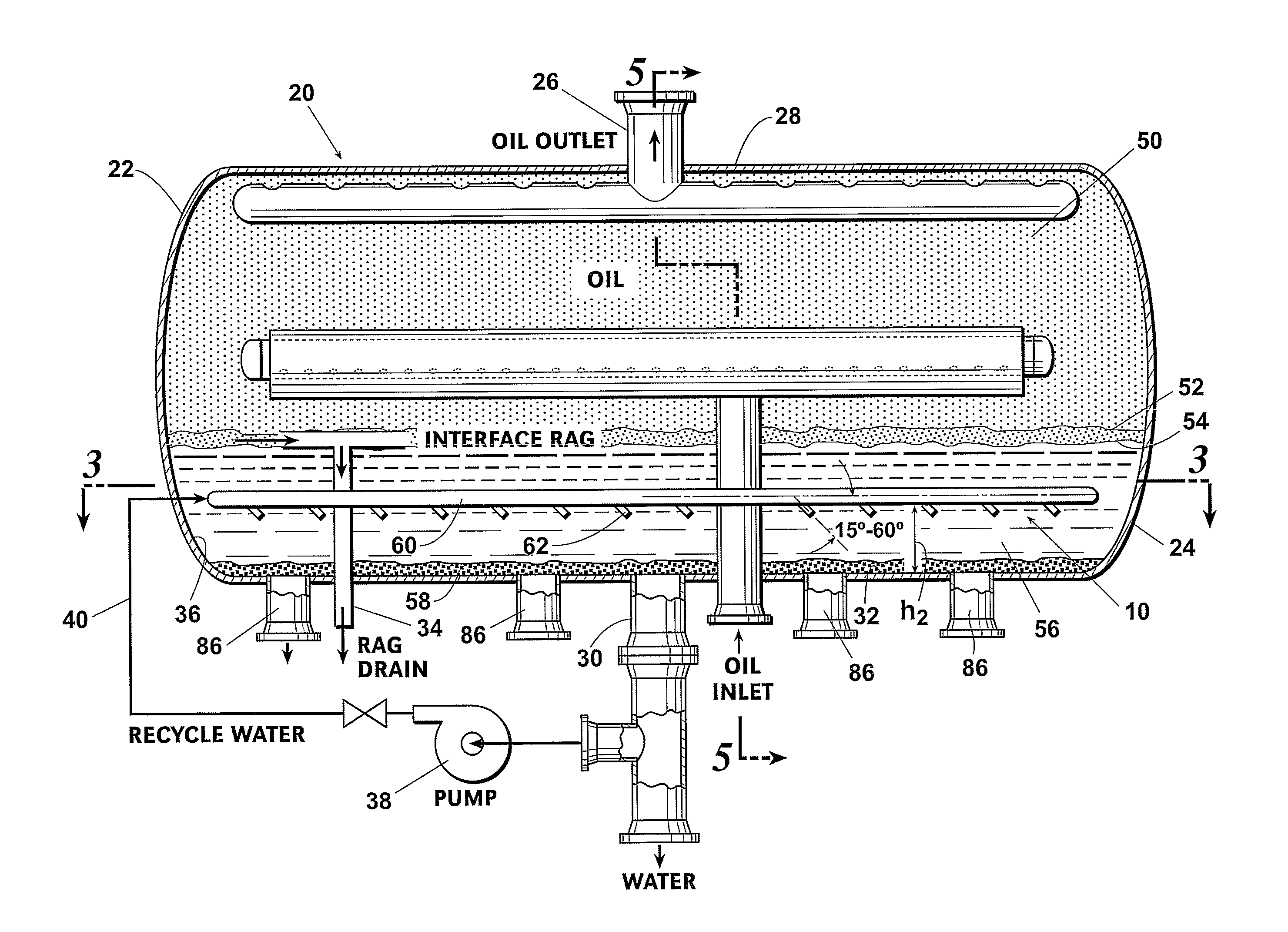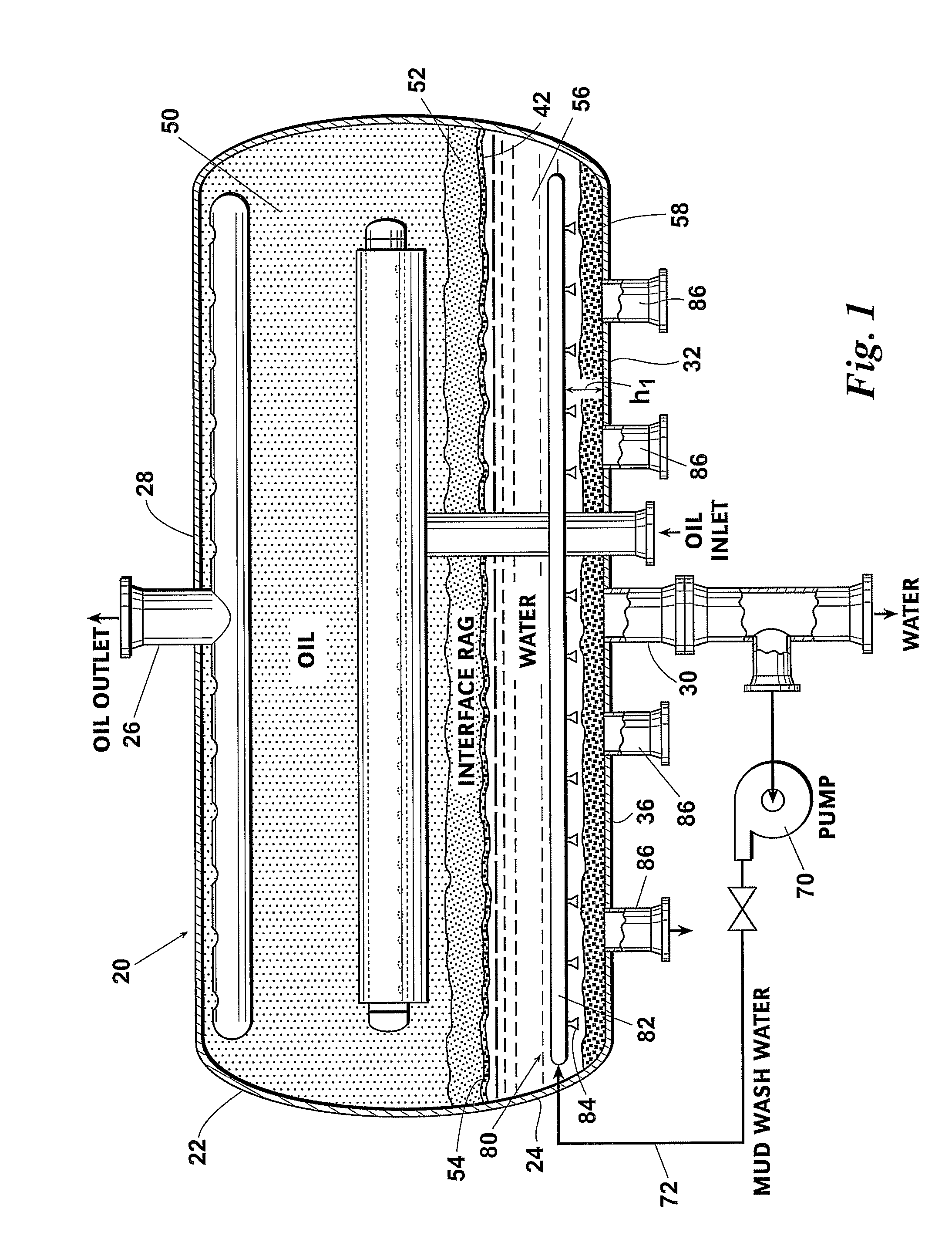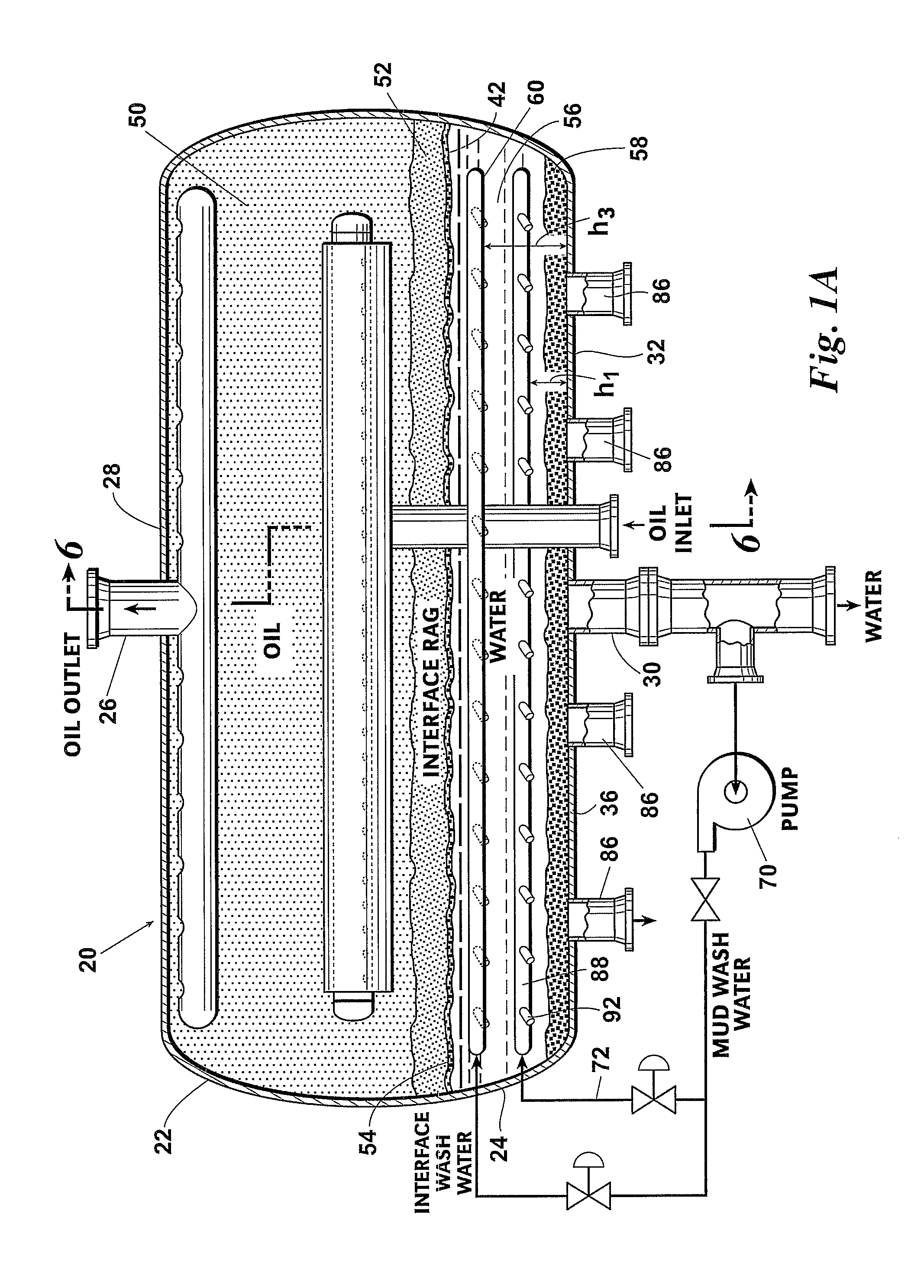Interface and Mud Control System and Method for Refinery Desalters
a technology of interface and mud control system and desalter, which is applied in the direction of sedimentation settling tank, separation process, instruments, etc., can solve the problems of high oil wet solids levels, upset water quality, and difficulty in coalescing fines, so as to promote a slow and continuous agitation of water
- Summary
- Abstract
- Description
- Claims
- Application Information
AI Technical Summary
Benefits of technology
Problems solved by technology
Method used
Image
Examples
Embodiment Construction
[0020]The present invention provides a method and system for preventing mud build-up within a separator vessel by continuously agitating the lower surface of the interface rag layer so as to suspend solids in the water layer and promote the collapse of mud residing in the interface rag layer. Elements illustrated in the drawings are identified by the following numbers:
10Interface emulsion control system20Separator vessel22Upper portion of 2024Lower portion of 2026Oil outlet28Top of 2030Water outlet32Bottom of 2034Rag drain36Inner wall surface of 2038Recycle pump40Recycle piping42Interface rag50Oil layer52Interface emulsion layer54Lower surface of 5256Water layer58Oil-coated solids / mud60First piping circuit62Nozzle64Outer periphery of 6066Inner periphery of 6068Centerline of 6070Recycle pump72Recycle piping80Mud wash system82Piping84Spray nozzle86Mud drain88Second piping circuit90Supports92Nozzle
[0021]Referring first to FIG. 1, a separator vessel 20 is connected by conventional pipin...
PUM
| Property | Measurement | Unit |
|---|---|---|
| angle | aaaaa | aaaaa |
| angle | aaaaa | aaaaa |
| oblique angle | aaaaa | aaaaa |
Abstract
Description
Claims
Application Information
 Login to View More
Login to View More - R&D
- Intellectual Property
- Life Sciences
- Materials
- Tech Scout
- Unparalleled Data Quality
- Higher Quality Content
- 60% Fewer Hallucinations
Browse by: Latest US Patents, China's latest patents, Technical Efficacy Thesaurus, Application Domain, Technology Topic, Popular Technical Reports.
© 2025 PatSnap. All rights reserved.Legal|Privacy policy|Modern Slavery Act Transparency Statement|Sitemap|About US| Contact US: help@patsnap.com



